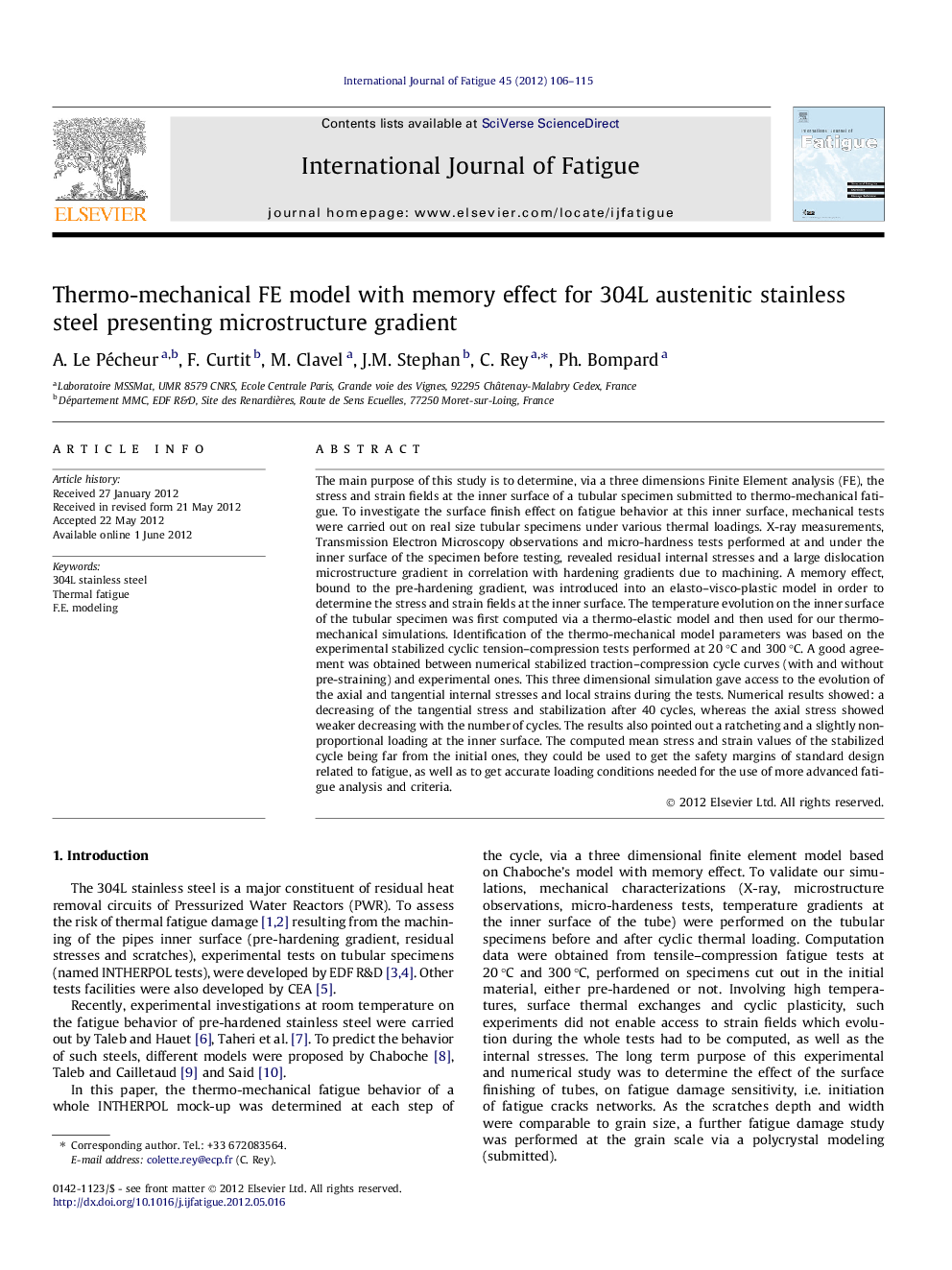| Article ID | Journal | Published Year | Pages | File Type |
|---|---|---|---|---|
| 777736 | International Journal of Fatigue | 2012 | 10 Pages |
The main purpose of this study is to determine, via a three dimensions Finite Element analysis (FE), the stress and strain fields at the inner surface of a tubular specimen submitted to thermo-mechanical fatigue. To investigate the surface finish effect on fatigue behavior at this inner surface, mechanical tests were carried out on real size tubular specimens under various thermal loadings. X-ray measurements, Transmission Electron Microscopy observations and micro-hardness tests performed at and under the inner surface of the specimen before testing, revealed residual internal stresses and a large dislocation microstructure gradient in correlation with hardening gradients due to machining. A memory effect, bound to the pre-hardening gradient, was introduced into an elasto–visco-plastic model in order to determine the stress and strain fields at the inner surface. The temperature evolution on the inner surface of the tubular specimen was first computed via a thermo-elastic model and then used for our thermo-mechanical simulations. Identification of the thermo-mechanical model parameters was based on the experimental stabilized cyclic tension–compression tests performed at 20 °C and 300 °C. A good agreement was obtained between numerical stabilized traction–compression cycle curves (with and without pre-straining) and experimental ones. This three dimensional simulation gave access to the evolution of the axial and tangential internal stresses and local strains during the tests. Numerical results showed: a decreasing of the tangential stress and stabilization after 40 cycles, whereas the axial stress showed weaker decreasing with the number of cycles. The results also pointed out a ratcheting and a slightly nonproportional loading at the inner surface. The computed mean stress and strain values of the stabilized cycle being far from the initial ones, they could be used to get the safety margins of standard design related to fatigue, as well as to get accurate loading conditions needed for the use of more advanced fatigue analysis and criteria.
► Cylindrical specimens (304L) submitted to thermo-mechanical fatigue. ► Experimental study: pre-working and residual stresses gradients due to machining. ► Thermo-mechanical elasto–visco-plastic cyclic model with memory effect (pre-working). ► Results: ratcheting, nonlinear biaxial loading on inner surface, tangential stresses. ► Results used in another paper to study damage criteria thanks to polycrystal model.
